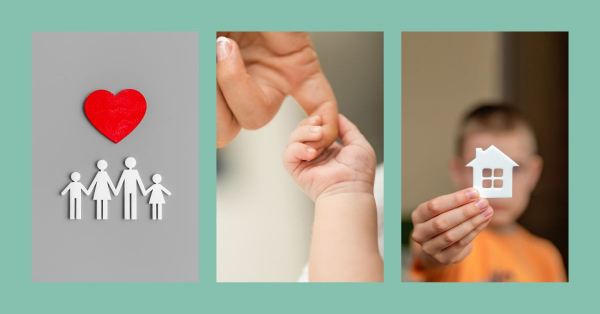Common Sleep Issues in Adopted Children and How To Address Them
Sleep. One of the most beautiful words in the English language for a parent – but also one of the scariest. Getting kids of all ages to sleep can be a daunting task, but there may be an increased challenge for adoptive parents.
I listened to a podcast discussing this topic on the Creating a Family website. Two mothers with children who were adopted and a licensed clinical social worker had a panel discussion about many common sleep issues and what we, as adoptive parents, can do to address them. In this article, I will try to summarize some of the most important points, but I’d also recommend listening to the podcast by clicking here. It’s a little over an hour, and worth the listen.
The three biggest takeaways I got from the podcast were the following:
1. Set short- and long-term sleep goals.
Every seemingly impossible task is always easier when you know what you’re working towards. With most adoptions, there is an ultimate goal of bonding and attachment between parent and child, but, unfortunately sometimes sleep can disrupt this bonding. It’s common knowledge that infants take a few months to sleep through the night. (Some, like my 2-year-old, take a few years!) However, the podcast stated that 30% of people, children and adults, struggle with sleep, so if your child is having issues, know you’re not alone.
The social worker suggested setting long-term AND short-term goals for sleep, and allowing yourself a reasonable amount of time to accomplish these goals. It is important that the goal of attachment comes first. Regardless of whether your child was adopted from birth or as an older child, he/she needs to know you are always going to be a trusted adult who will keep them safe. When you feel like there is a secure relationship and a strong bond between parent and child, then it’s appropriate to begin some sleep goals.
A few examples of sleep goals include: everyone in the house getting a good night’s sleep, your child falling asleep independently, getting your child to have a bedtime routine, and getting your child to sleep without any tantrums prior to bed.
Keep goals simple and attainable. Also, don’t beat yourself up if your child seems to make progress and then regresses. Kids have to learn how to fall asleep, and learning means making mistakes and fixing them and making more mistakes and fixing them. It’s a journey, not a destination. Setting these goals specific to your child and your family will let you know what you need to work towards when beginning to sleep-train your child.
2. Keep a consistent and predictable bedtime routine.
All children thrive on structure and routines. Most adults do too, but we’re not as willing to admit to it. Children who were adopted, especially those children who may have been in multiple foster homes before getting adopted, need predictability and stability more than other kids. When you’re thinking about a bedtime routine, you have to really start at the time your child wakes up in the morning. What’s going on during the day? Many children who were adopted are triggered at bedtime because it’s the first time all day they have to quiet their brain. One suggestion the podcast offered was to allow these children some time during the day to learn how to relax and quiet their brain. They need to understand that it’s okay to let things go, and they will still be safe. Were the child’s emotional needs met during the day? Did he/she have time to practice being relaxed so it’s not so scary when they have to do it at night?
When it gets closer to actually getting ready to sleep, think about how you want the 2 hours leading up to bedtime to look. The more predictable, the better. The more a child knows they will be safe and you will do what you promised, the easier it will be for them to trust. If you have dinner, showers, stories, prayers, and bed, stick to that routine. If you know the routine is going to be different one day, explain that to your kids. Be honest and calm, and keep the consistency as best you can.
The podcast also mentioned how important it is for the parents to allow themselves time to unwind and have their own needs met. So often as an adoptive/therapeutic parent, your whole focus is on making sure your child’s needs are met that you forget you have needs of your own. Take care of yourself so you can take care of your family.
3. Consider your child’s past; each child and each family has unique needs.
The podcast recognized that sleep and sleep training is not a “one size fits all” process, so this is where your strengths as parents come into play. What happened in your child’s past that is making them have trouble sleeping? Were they the primary caregiver at night? Did any type of abuse happen to them at night? Have your child brainstorm with you what needs to happen to allow them to feel safe and sleep better at night. Use your instincts to best help your child.
Some children benefit from verbalizing their fears. Ask them what they are afraid of, and when they are able to say it out loud, they’re giving that fear to you. You keep it for them, so they don’t have to hold onto it at night, keeping them from getting a good night’s sleep. Sometimes white noise, audio books, or classical music played softly helps to quiet a child’s brain at night. It gives them something to focus on that’s not their fears about falling asleep.
I strongly recommend listening to the podcast if you are having issues with your child and sleep – at the very least it will remind you that you are not alone, and sleep will come, it might just take longer and look differently than in other families.







